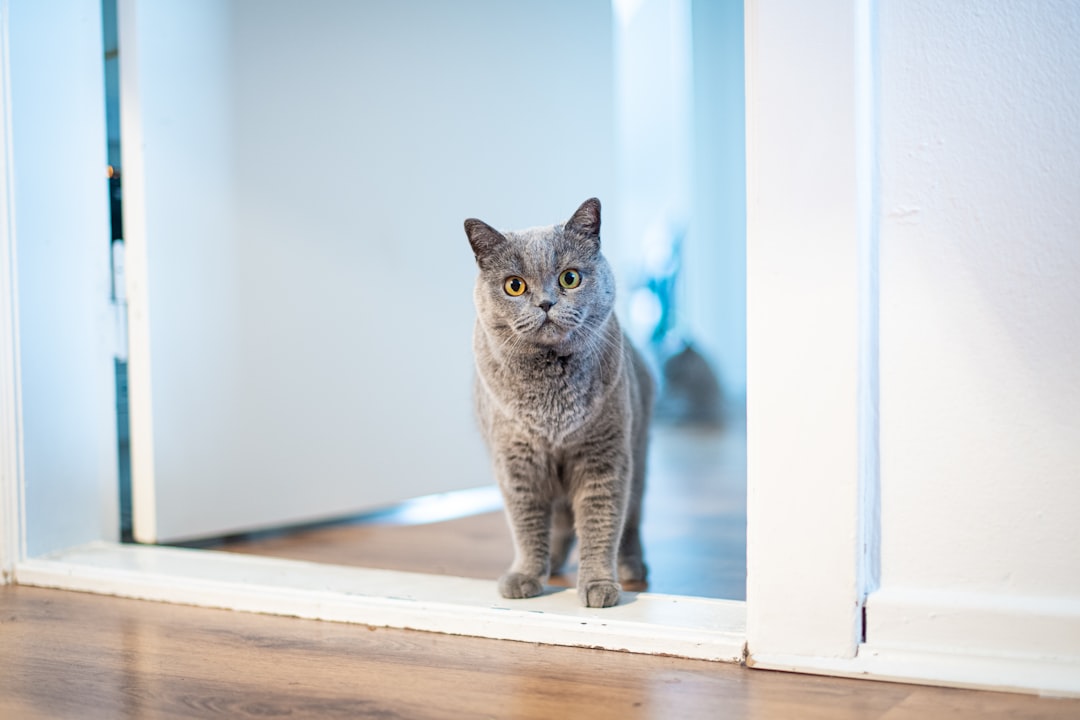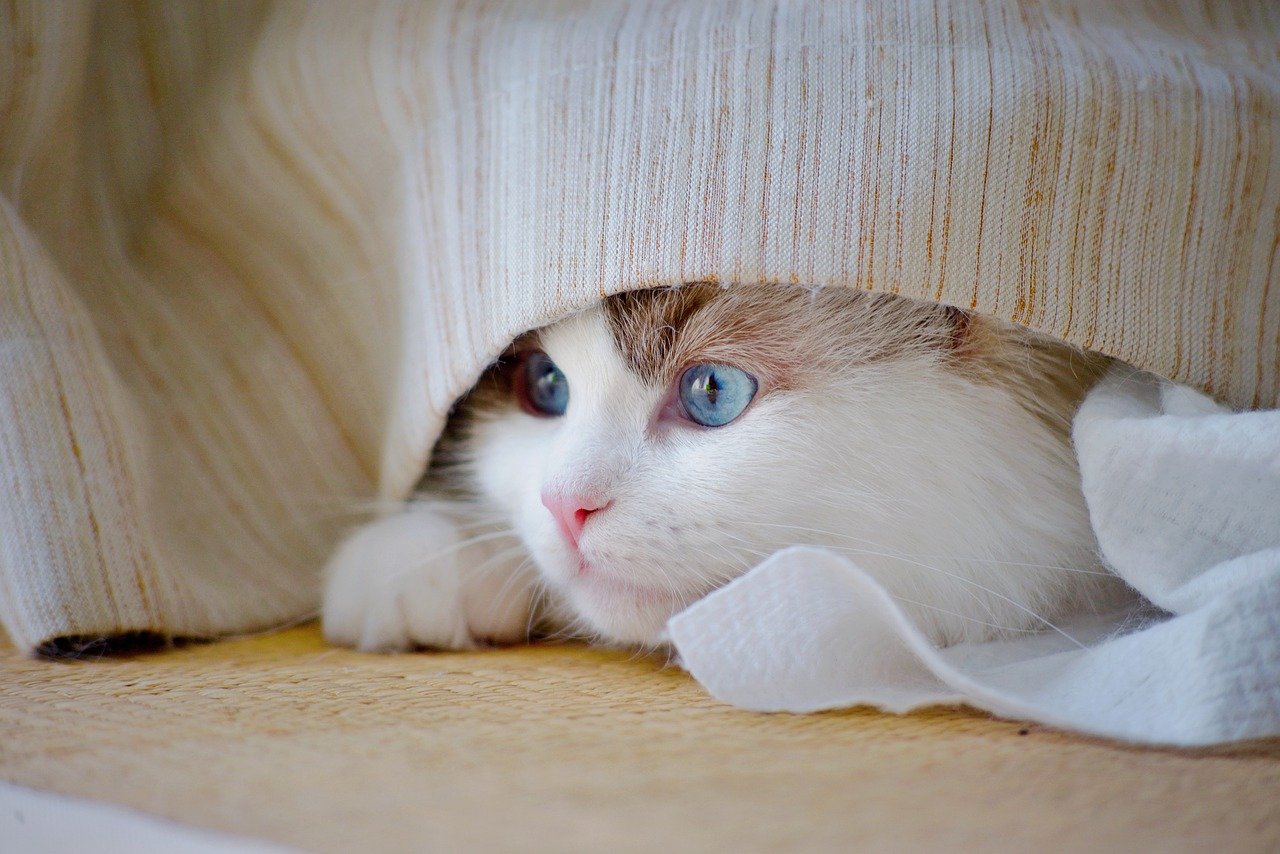Picture this: your fearless feline warrior who stalks prey with stealth and pounces on toy mice with ruthless precision suddenly turns into a quivering ball of fur at the sound of your hair dryer. It might seem amusing, yet understanding what makes our confident cats become scaredy-cats can help us create more comfortable homes for them. Just as in humans, all cats have some degree of normal fear when they hear loud, sudden, or strange noises. It’s a survival instinct.
These mysterious creatures carry ancient instincts that kick in when certain sounds hit their ultra-sensitive ears. Cats are turned off by many sounds because they can hear noises from 45 to 60,000 hertz. That is compared to your 20–20,000-hertz hearing range. So what exactly sends even the most fearless feline running for cover? Let’s explore these terrifying sounds together and discover why they have such a dramatic impact.
The Roaring Monster: Vacuum Cleaners

Nothing quite strikes fear into a cat’s heart like the dreaded vacuum cleaner. Have you noticed that your kitty runs in terror every time you vacuum the carpet? That’s because she hates the loud, continuous sound of the vrooming vacuum. Think about it from your cat’s perspective – this mechanical beast emerges from dark closets, roars like a monster, and relentlessly chases dirt around the house while making an ungodly racket.
The combination of factors makes vacuums particularly terrifying for cats. Cats have extremely sensitive ears, so it’s no surprise that they won’t like something as loud as a vacuum cleaner. Not only are vacuum cleaners loud, but they can also be quite large, and some also have lights that may turn on, which can be very startling for some cats. Many cats won’t just hide – they’ll bolt to another room entirely the moment you pull that machine from storage.
The Shrieking Serpent: Hair Dryers

Hair dryers rank high on the list of household appliances that send cats scrambling for safety. To the feline perspective, a hair dryer can represent any number of potential threats. With its long cord and shrieking sound, it can seem like a sort of serpent creature. The noise can make a cat feel as if it is alive. For cats who suffer from separation anxiety, hair dryers carry an additional burden of dread.
Therefore, along with being loud and bothersome, hair dryers can also signal to cats that you’re about to leave. Cats with separation anxiety may feel additional fear towards hair dryers because they signify that their owners are about to go out and leave them home alone. This creates a double-whammy effect where the terrifying sound also means abandonment is coming.
Sharp Alerts: Electronic Beeps and Alarms

Those innocent beeping sounds from microwaves, smoke detectors, and phone alarms might seem harmless to us, but they’re acoustic nightmares for our feline friends. What do microwave timers, smoke detectors, and phone alarms have in common? They all produce sharp, repetitive beeps that are prime examples of high-frequency sounds cats hate. While these noises are loud for humans, the piercing beeps can feel overwhelming to a cat’s sensitive ears.
You might think alarm clocks are just for waking us up, but for cats, they’re a whole different story. The sudden, high-pitched beeping of an alarm clock can be startling for cats, making them jump out of their fur. This is because cats are naturally alert and responsive to their surroundings, and sudden noises can catch them off guard. So, while you might be groaning at the sound of your alarm, your cat is probably halfway to the ceiling in sheer terror.
Kitchen Chaos: Blenders and Grinding Sounds

Kitchen appliances create some of the most jarring sounds for cats, with blenders leading the charge. Even humans don’t enjoy the sound of a kitchen blender. A cat’s ears are much more sensitive than a human’s ears, so turning on the blender can be a much more unpleasant experience for them. Blenders are both loud and don’t emit a pleasant sound, and many cats will avoid being in the kitchen whenever the blender is turned on.
Blenders and Coffee Grinders: These appliances produce high-pitched sounds that can be particularly jarring. Blenders, hairdryers, and coffee grinders all fall into this category. Their sudden start-and-stop sounds combined with mechanical whirring can easily overwhelm a cat’s finely-tuned hearing. The unpredictable nature of these sounds – when they start, stop, or change intensity – makes them especially unsettling for creatures who rely heavily on their hearing for survival.
Hissing Horrors: Aerosol Cans and Steam

The sharp hiss of an aerosol can triggers an immediate fear response in most cats, and there’s a fascinating reason behind this reaction. Spraying an aerosol can might seem like a mundane task to us, but to a cat, it can be a nightmare. The hissing sound that comes from an aerosol can is eerily similar to the hissing noise cats make when they’re threatened. This can trigger a fight or flight response in your cat, causing them to become anxious or fearful.
In a cat’s world, hissing is never followed by anything good. A hiss is the universal animal signal for “back off.” Cats themselves hiss when threatened, so the sharp spray of an aerosol can, the hiss of a snake, or even a radiator’s steam valve triggers an instinctive reaction. In the feline brain, these sounds are hardwired to mean danger. This explains why cats immediately associate these sounds with threat and danger.
Metallic Mayhem: Aluminum Foil and Crinkling Sounds

That innocent roll of aluminum foil sitting in your kitchen drawer is actually a source of terror for many cats. You might not think twice about tearing off a length of aluminum foil or balling up used tinfoil in the kitchen. But these innocuous household noises are common sounds that annoy cats. The combination of texture, appearance, and sound creates a perfect storm of feline fear.
Aluminum foil already has a few strikes against it. Its strange texture and flashing, reflective surface tend to spook some felines. But the loud, unexpected sound of tearing tinfoil and the metallic crunch of crumpled foil tend to set many cats fleeing. That may be because these noises mimic sounds of danger in nature, like thunder or the rustling of a predator in the underbrush. Even rustling plastic bags can send some cats diving for cover due to their unpredictable crinkling sounds.
Sudden Slams: Doors and Impact Sounds

Door slams represent one of the most universally startling sounds for cats, combining multiple fear factors into one jarring experience. Any sudden loud noise can startle a cat. A slamming door also sends vibrations through the floor and walls that signal approaching danger. These vibrations travel through the house structure, alerting cats to potential threats even when they’re in different rooms.
Some noises that can understandably startle a cat include a door slamming, someone dropping something, road construction outside, and thunder. Doorbells and Alarms: Sudden, unexpected noises can startle your cat and send them running for cover. The unpredictable timing of these sounds makes them particularly effective at triggering the startle response, since cats can’t prepare themselves mentally for the sudden acoustic assault.
Understanding and Helping Your Fearful Feline

Now that we understand what terrifies our cats, we can take steps to help them cope with these unavoidable household sounds. One of the most effective ways to help cats feel less afraid of noises is to use the behavior modification techniques called desensitization and counterconditioning. Over multiple sessions, you will get your cat used to the alarming noise by gradually increasing the volume of the sound or decreasing the distance between your cat and the sound source until the cat is able to remain completely relaxed while the sound occurs at its typical volume.
Creating safe spaces and understanding their perspective makes a tremendous difference. “Cats’ sense of hearing is about three times more sensitive than ours,” according to animal behavior experts. “That means that cats may be afraid of things we can’t even hear,” he adds. Remember that The best thing to do is let your cat hide in a place of her choosing. Let her stay there as long as she needs to. This is natural and what cats do in the wild when they’re scared.
These seemingly innocent household sounds can transform our brave hunters into trembling scaredy-cats in seconds. Understanding their perspective helps us create more comfortable environments and shows just how remarkable their survival instincts truly are. The next time your fearless feline flees from the vacuum cleaner, remember they’re not being dramatic – they’re just being wonderfully, instinctively cat. What sounds does your cat fear most? Share your stories in the comments below.
Hi, I’m Andrew, and I come from India. Experienced content specialist with a passion for writing. My forte includes health and wellness, Travel, Animals, and Nature. A nature nomad, I am obsessed with mountains and love high-altitude trekking. I have been on several Himalayan treks in India including the Everest Base Camp in Nepal, a profound experience.





